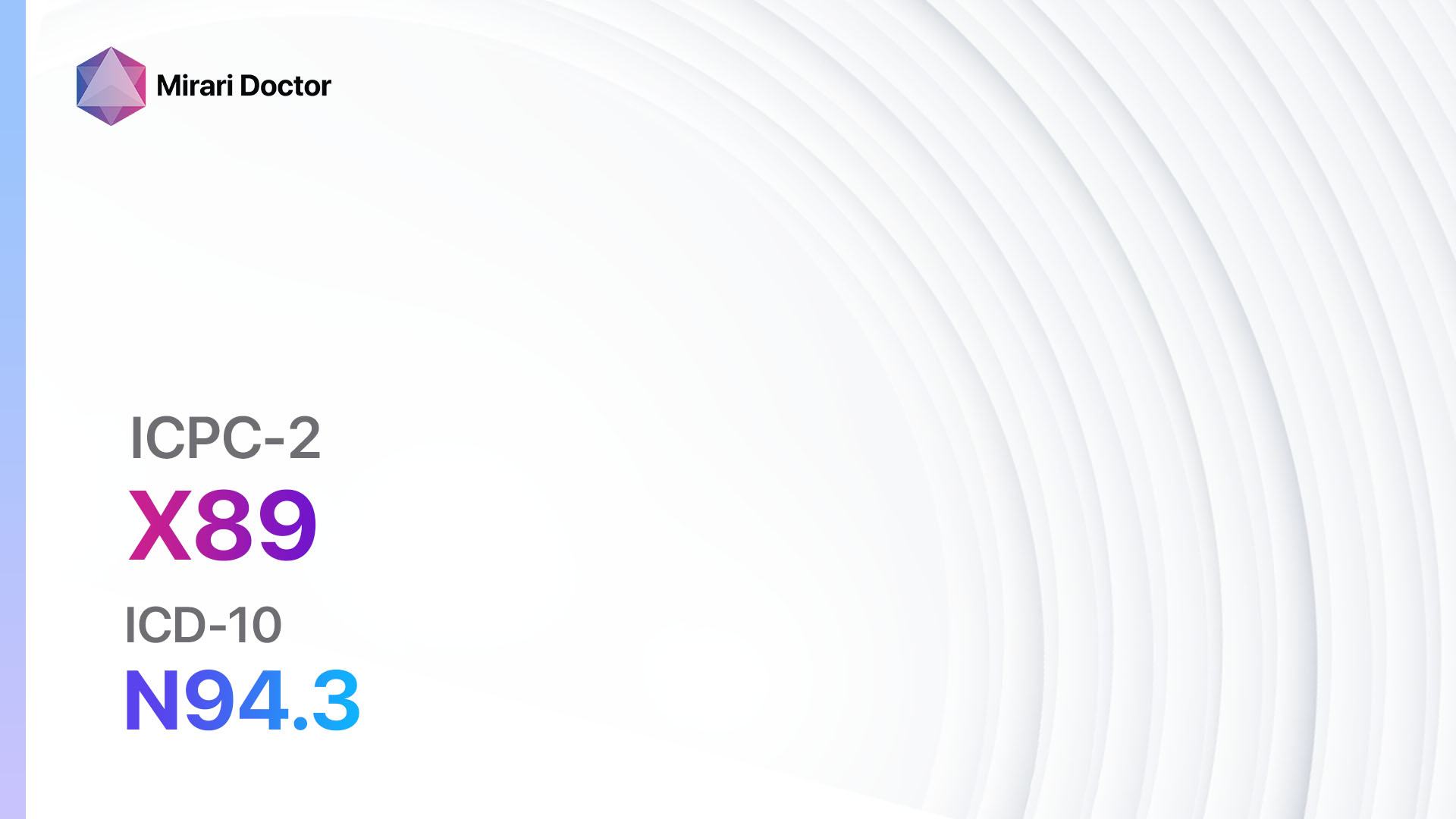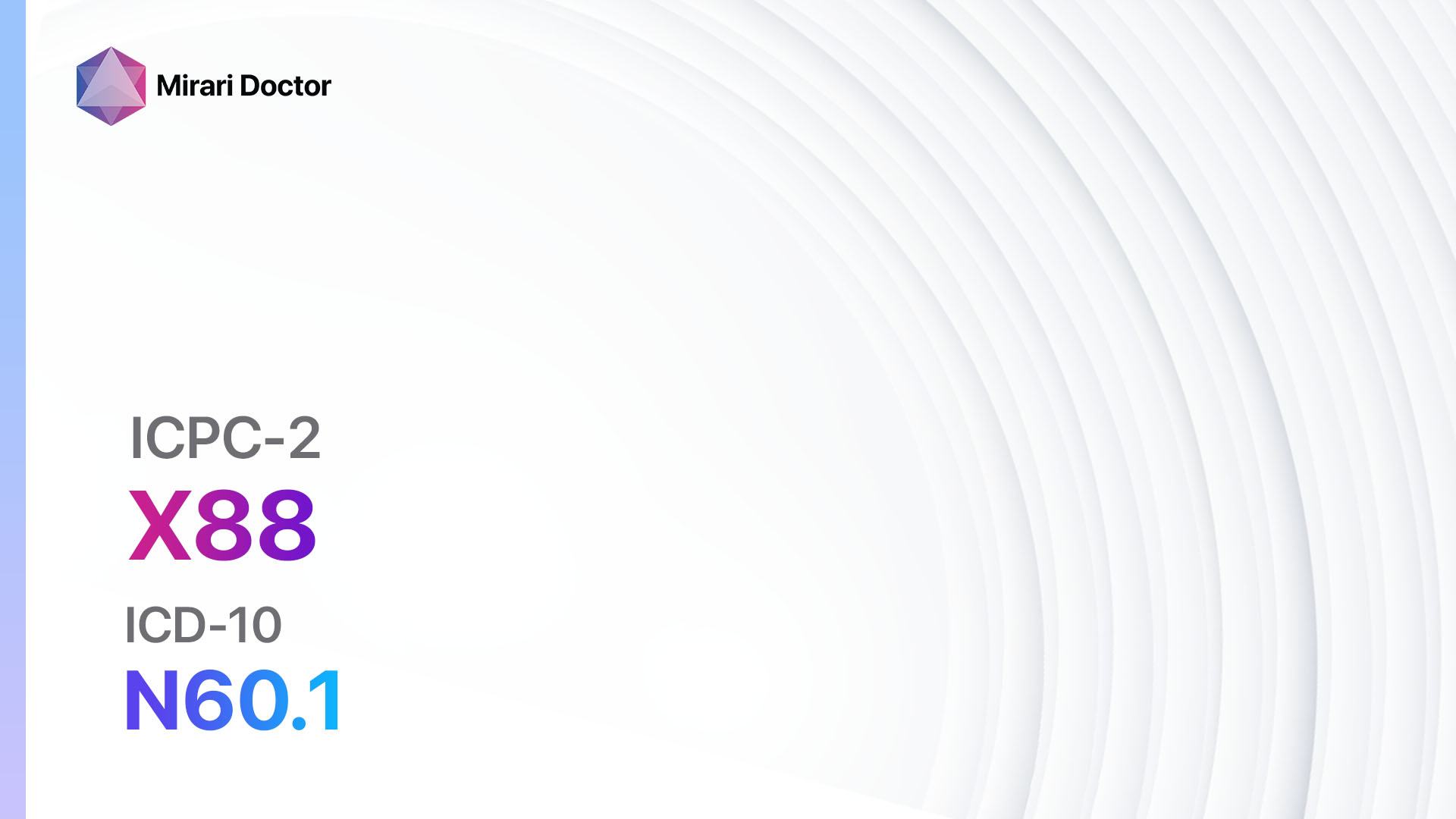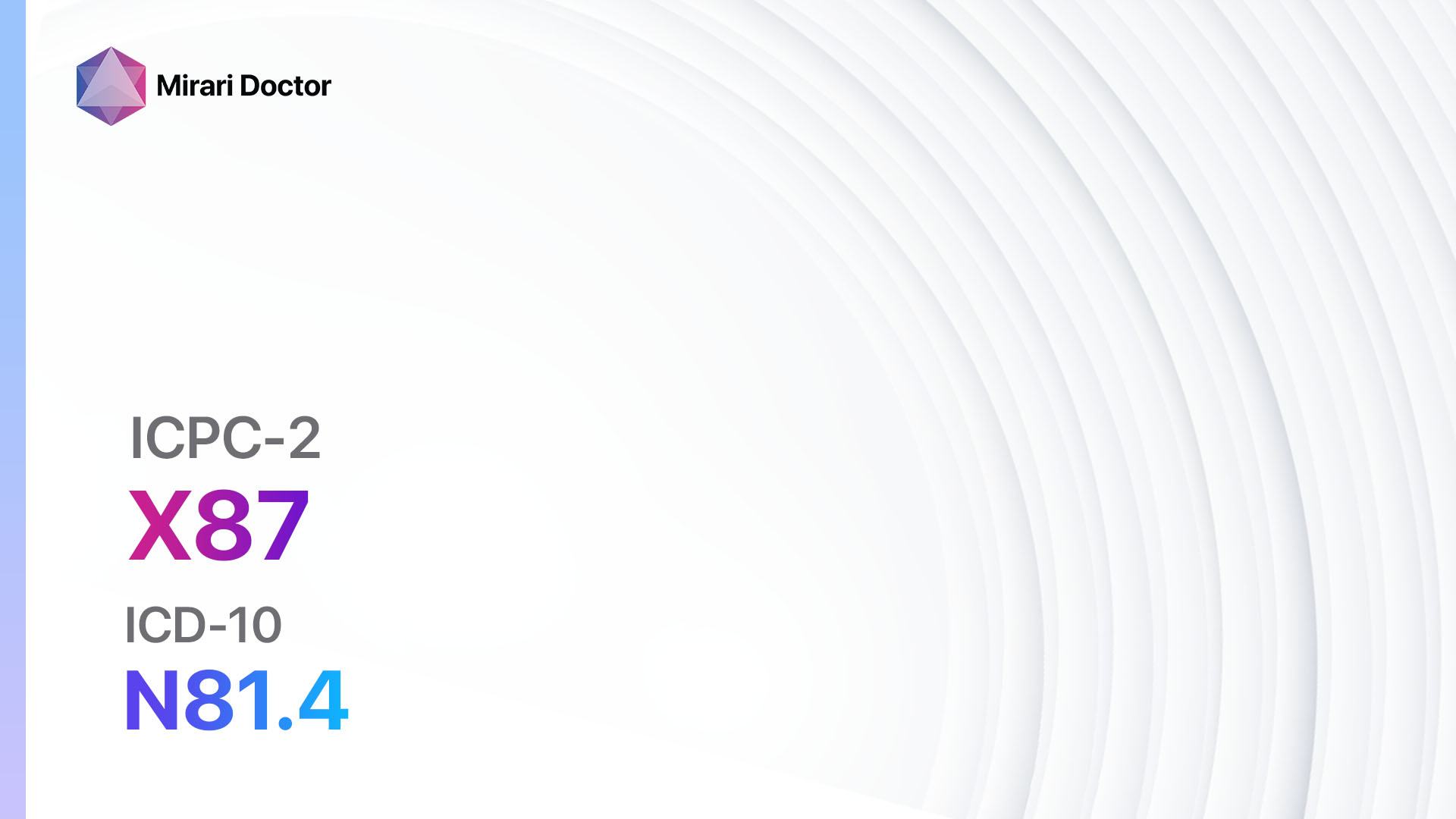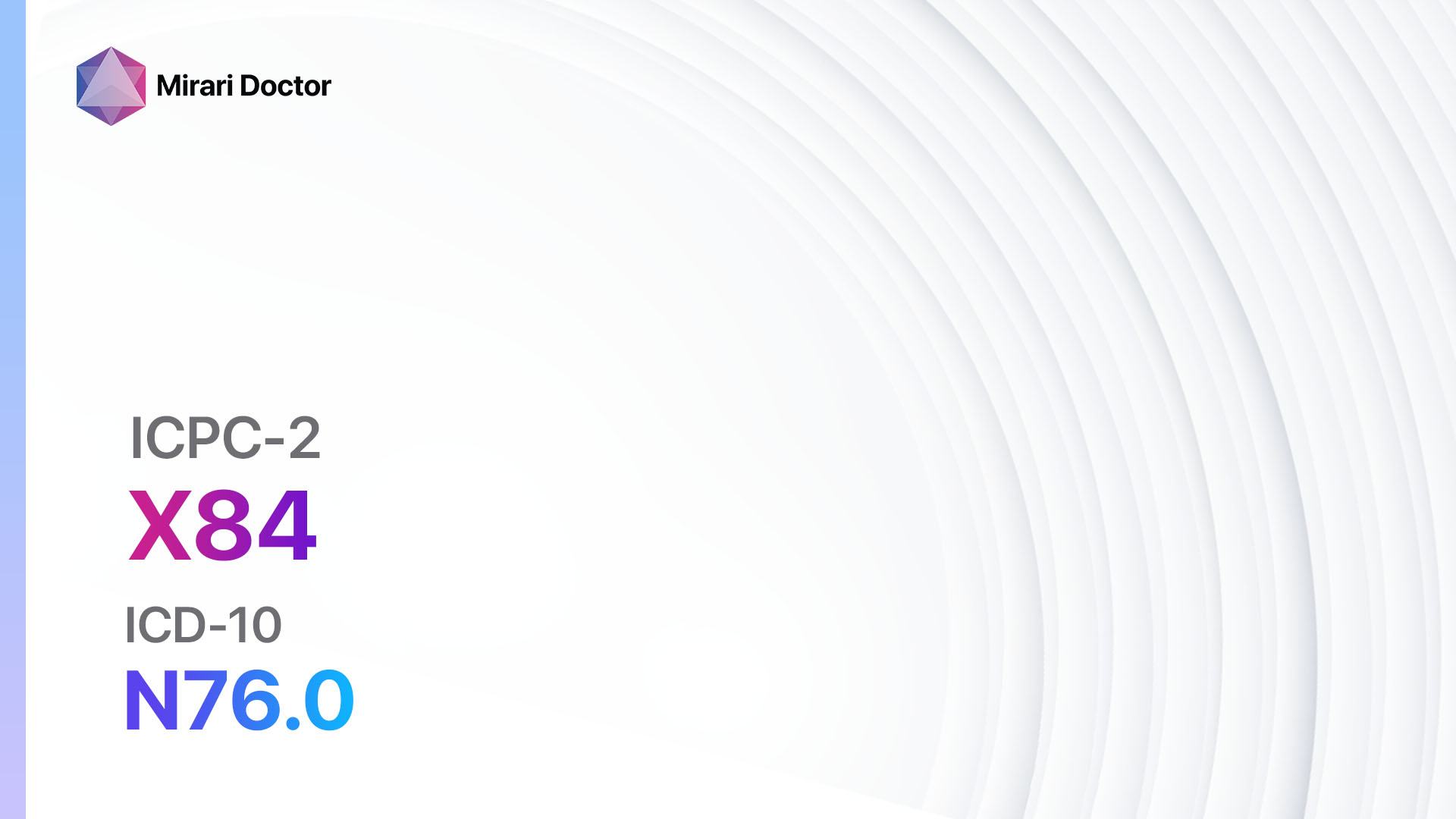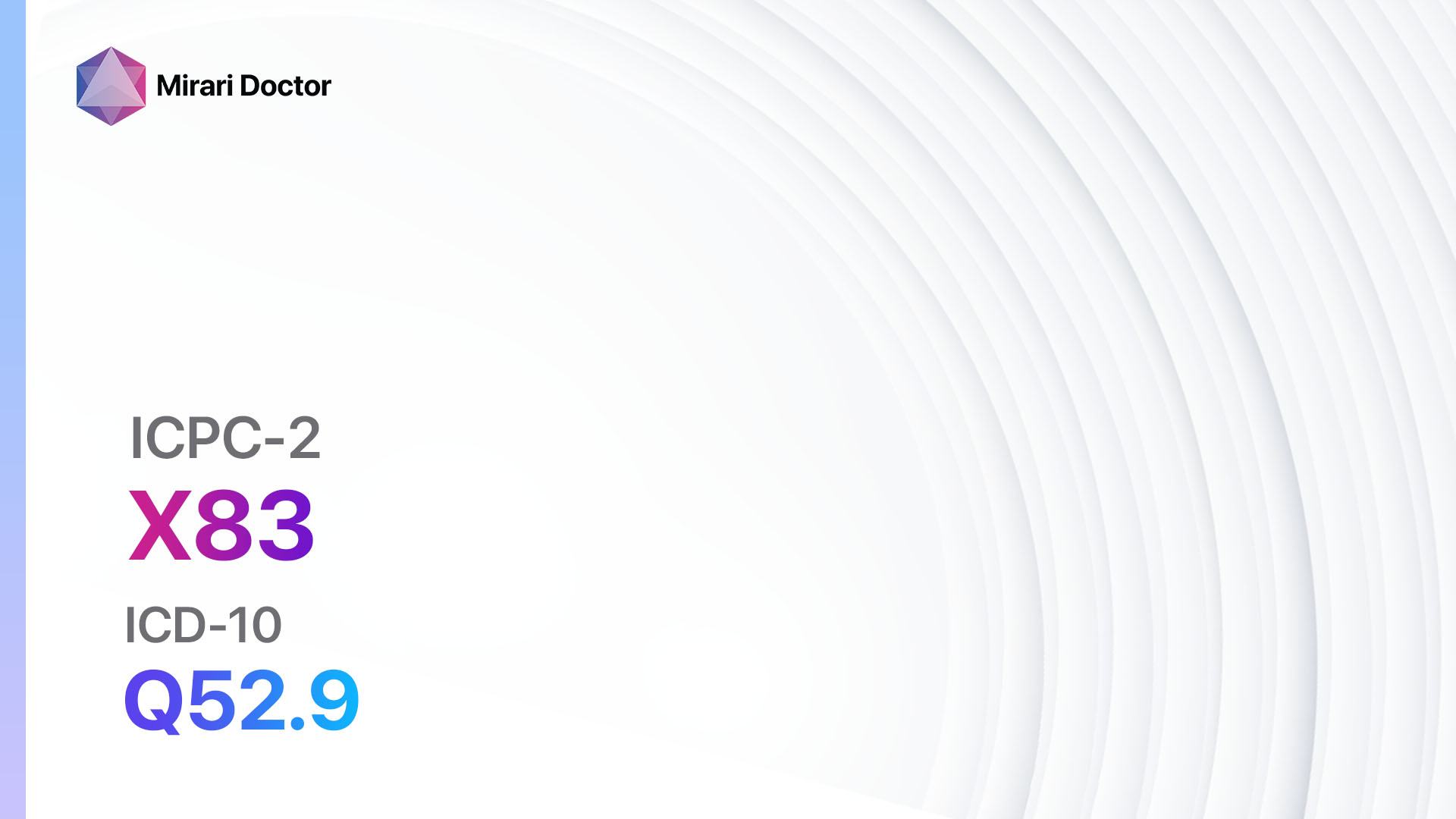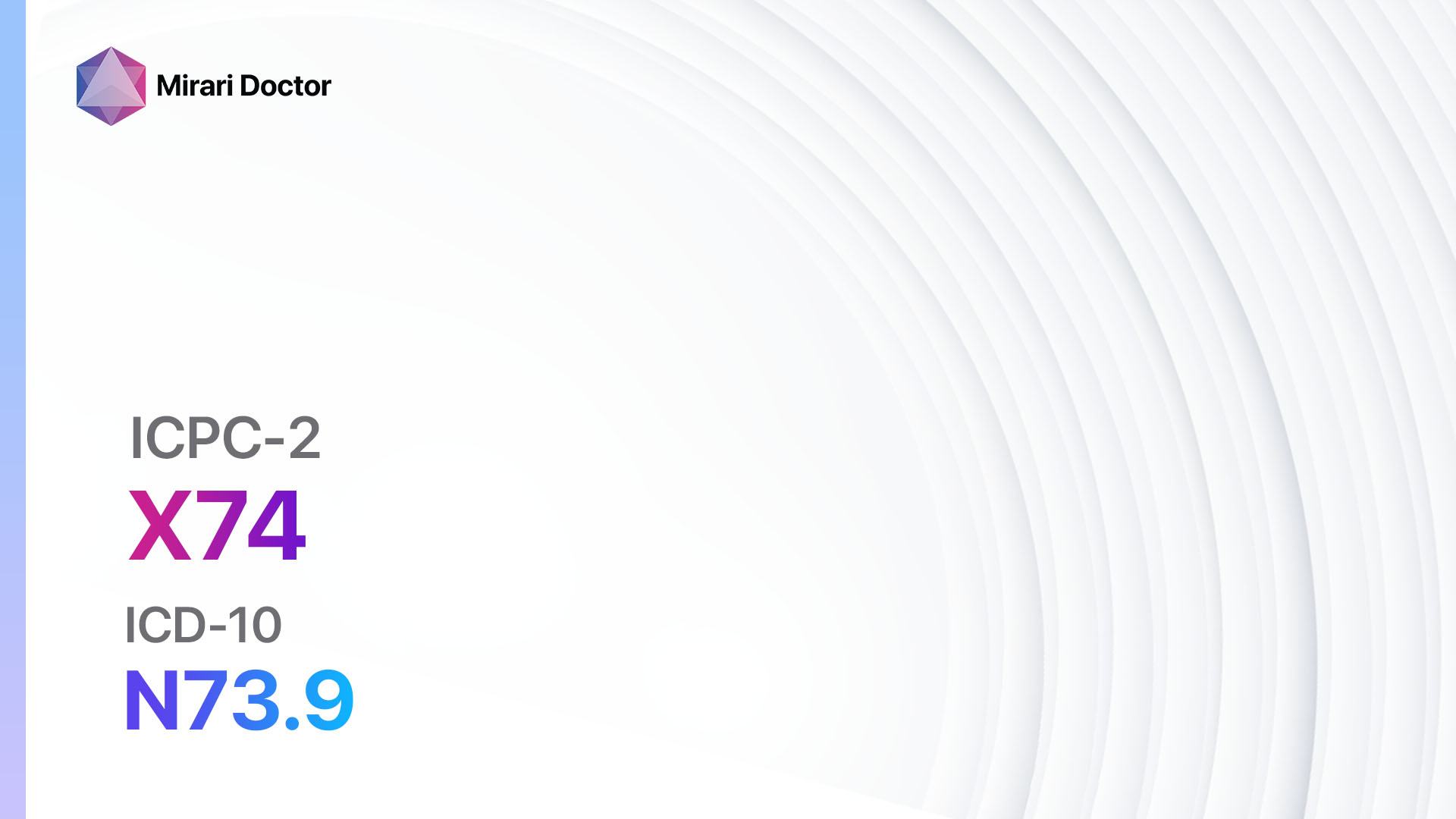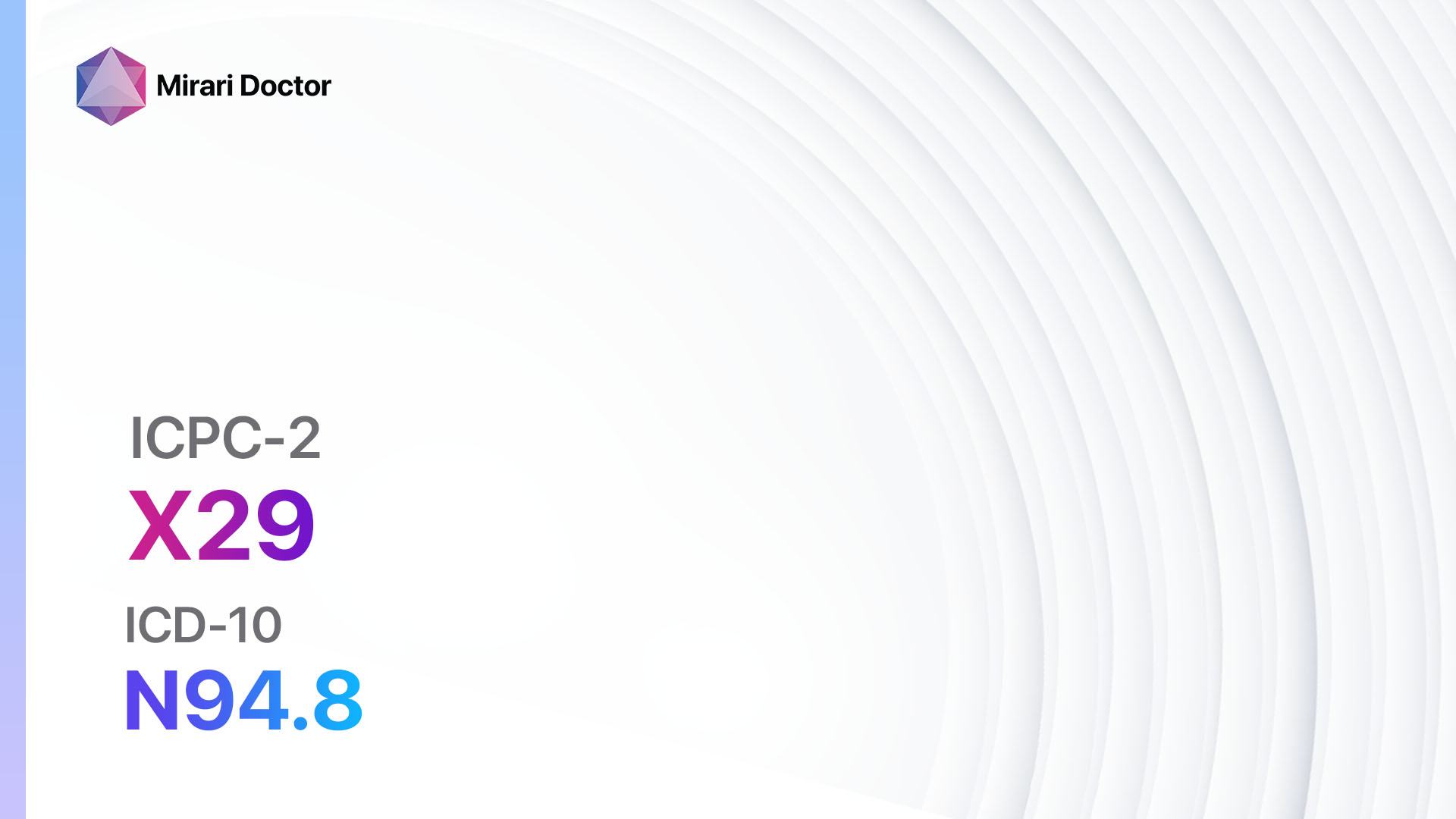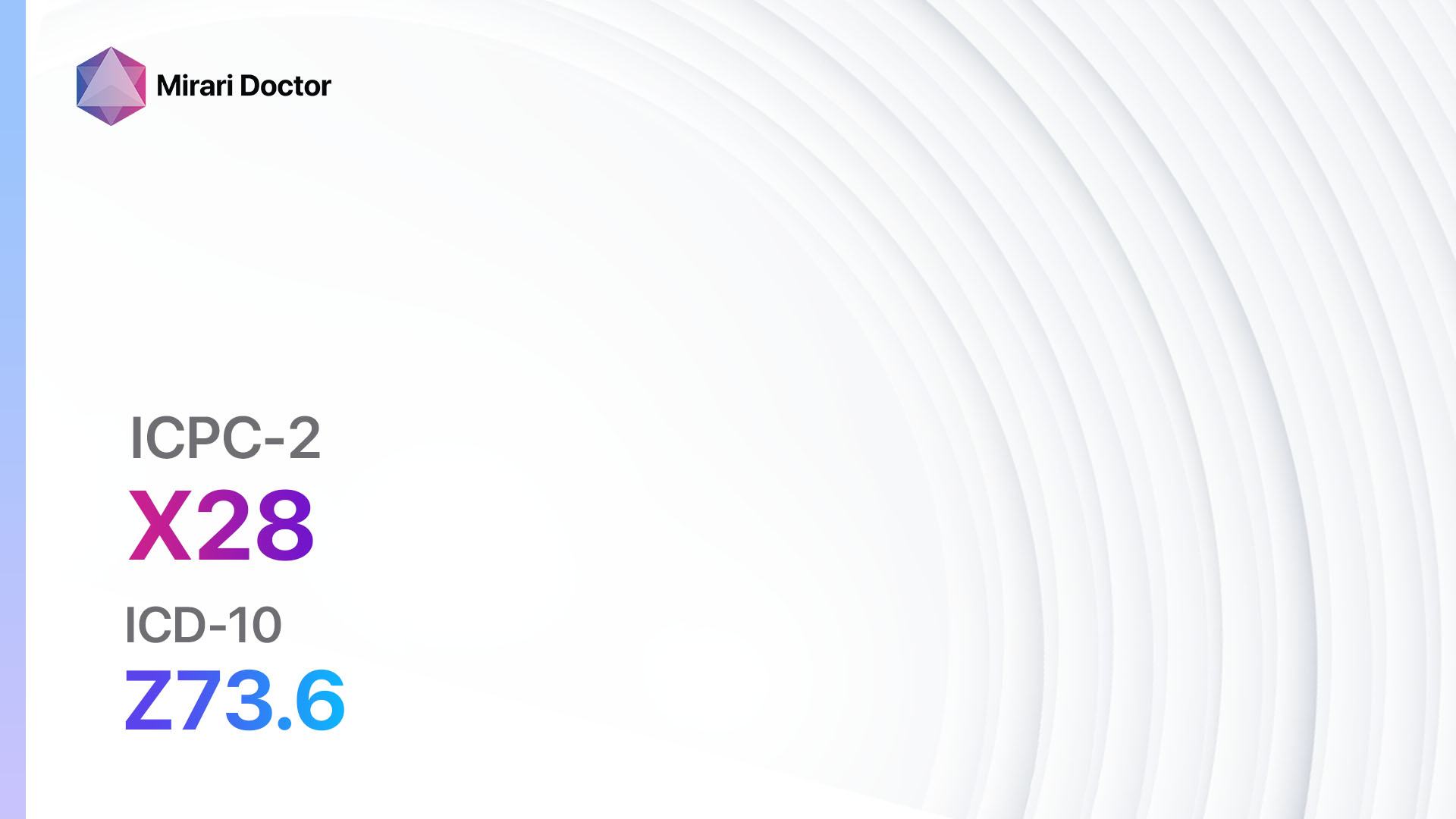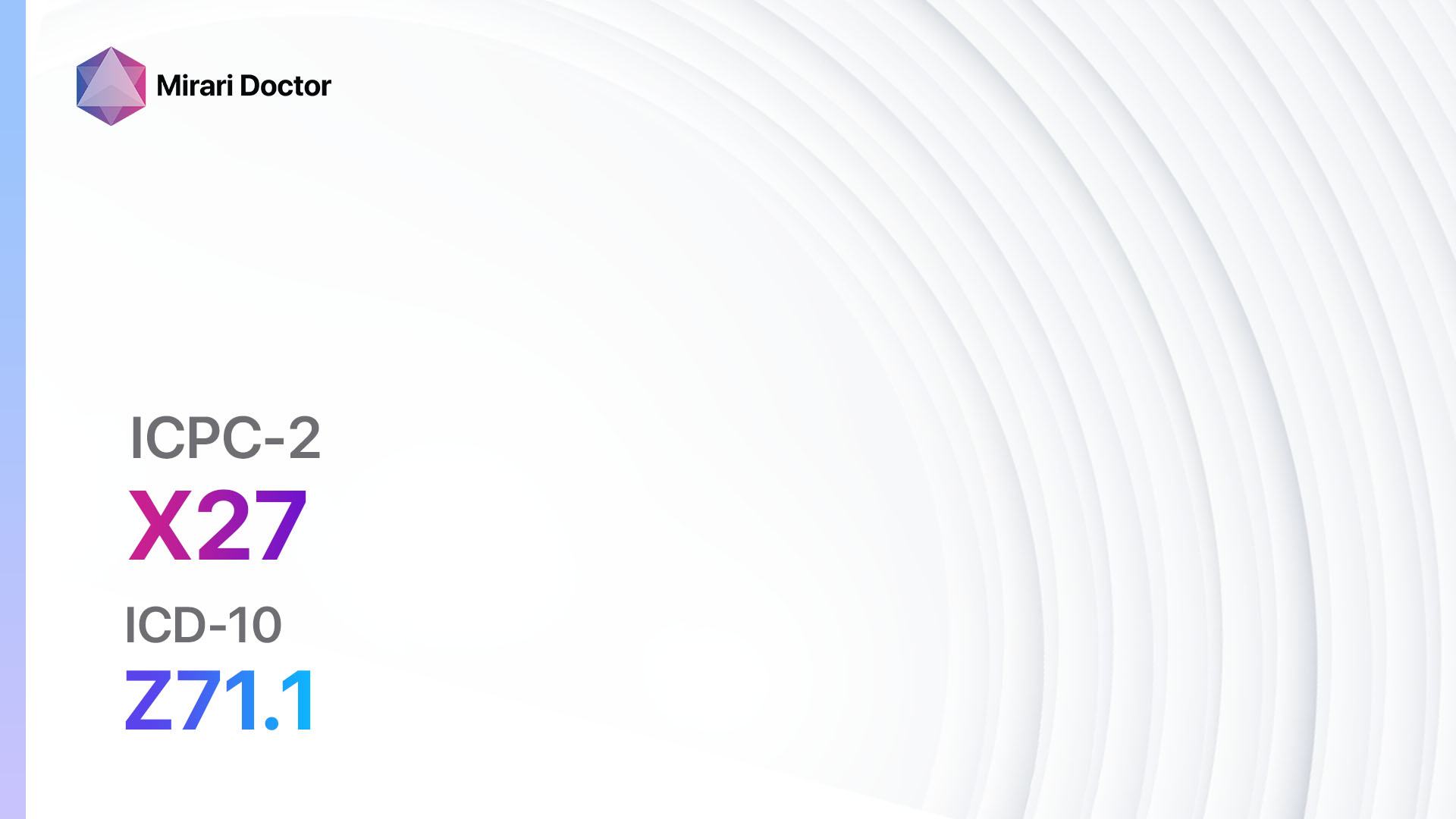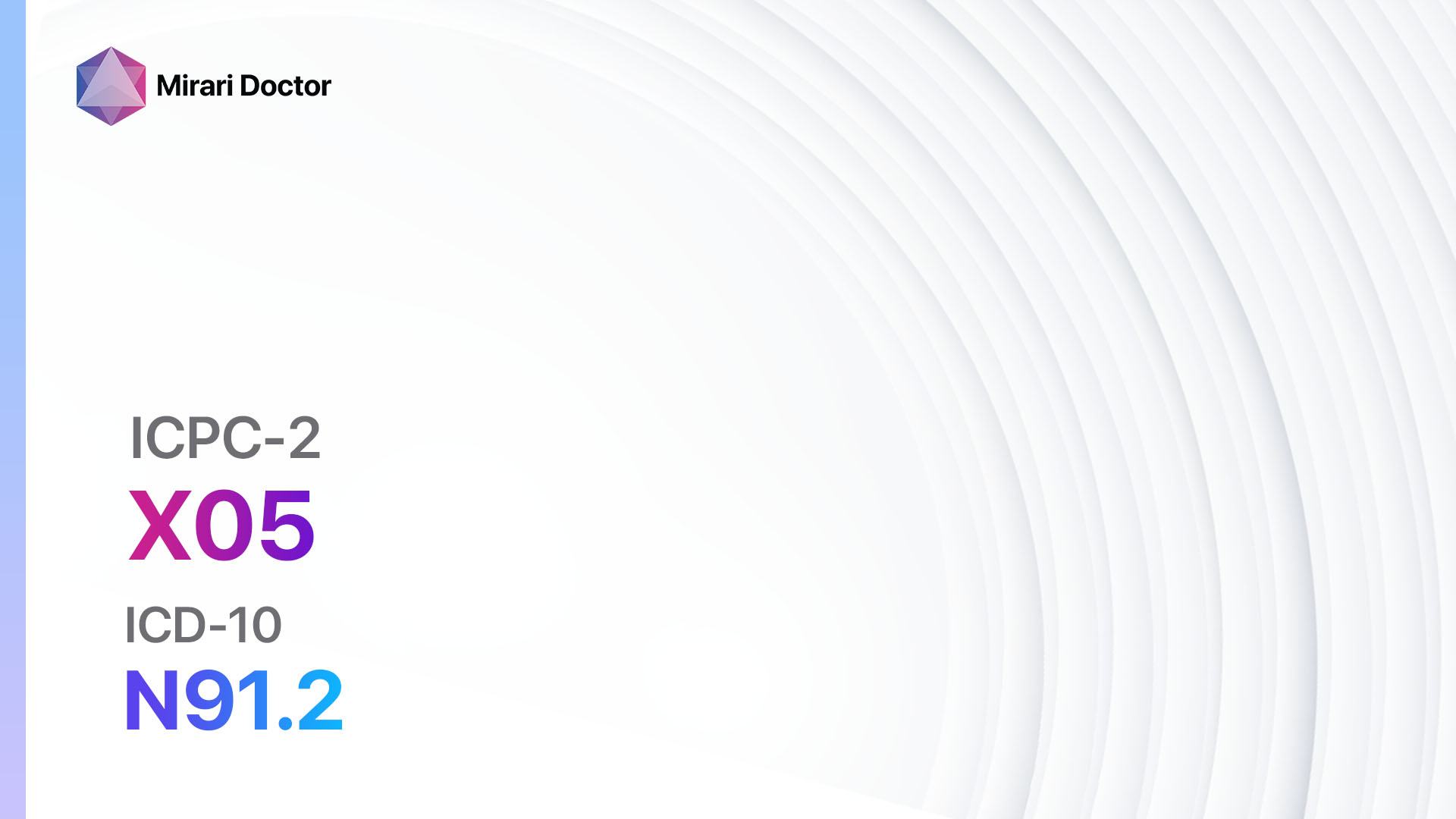
Introduction
Menstruation absent/scanty refers to the condition where a woman experiences either the absence of menstruation or very light and infrequent menstrual periods. This condition can have various underlying causes and can significantly impact a woman’s reproductive health and overall well-being[1]. The aim of this guide is to provide a comprehensive overview of the symptoms, causes, diagnostic steps, possible interventions, and lifestyle interventions for menstruation absent/scanty.
Codes
Symptoms
- Absence of menstrual periods
- Very light or scanty menstrual flow
- Infrequent menstrual periods[2]
Causes
- Hormonal imbalances, such as polycystic ovary syndrome (PCOS)
- Thyroid disorders
- Excessive exercise or low body weight
- Stress and emotional factors
- Certain medications, such as hormonal contraceptives or antipsychotics
- Chronic illnesses, such as diabetes or kidney disease[3][4]
Diagnostic Steps
Medical History
- Gather information about the patient’s menstrual history, including the age of onset, regularity, and any changes in flow.
- Inquire about any underlying medical conditions, such as PCOS or thyroid disorders.
- Assess the patient’s weight and exercise habits.
- Discuss any recent stressors or emotional factors that may be contributing to the condition[5].
Physical Examination
- Perform a general physical examination to assess overall health.
- Conduct a pelvic examination to evaluate the reproductive organs for any abnormalities or signs of hormonal imbalances.
- Check for signs of excessive exercise or low body weight[6].
Laboratory Tests
- Hormone levels: Measure levels of hormones such as estrogen, progesterone, follicle-stimulating hormone (FSH), and luteinizing hormone (LH) to assess for hormonal imbalances.
- Thyroid function tests: Evaluate thyroid hormone levels to rule out thyroid disorders.
- Blood count: Check for anemia or other blood disorders that may be causing the absence or scantiness of menstrual flow.
- Pregnancy test: Exclude pregnancy as a cause of absent or scanty periods[7].
Diagnostic Imaging
- Pelvic ultrasound: Visualize the reproductive organs to identify any structural abnormalities or cysts that may be causing the condition.
- Magnetic resonance imaging (MRI): In certain cases, an MRI may be recommended to further evaluate the reproductive organs or detect any tumors or growths[8].
Other Tests
- Endometrial biopsy: If there are concerns about the lining of the uterus, a small sample may be taken for further evaluation.
- Genetic testing: In some cases, genetic testing may be recommended to identify any underlying genetic conditions that may be causing the absence or scantiness of menstrual flow[9].
Follow-up and Patient Education
- Schedule a follow-up appointment to discuss the results of the diagnostic tests and determine the appropriate course of treatment.
- Provide patient education on the importance of maintaining a healthy lifestyle, managing stress, and seeking medical attention for any concerns or changes in menstrual patterns[10].
Possible Interventions
Traditional Interventions
Medications:
Top 5 drugs for Menstruation absent/scanty:
- Combined oral contraceptives (e.g., ethinyl estradiol and levonorgestrel):
- Cost: $20-$50/month.
- Contraindications: History of blood clots, certain cancers, liver disease.
- Side effects: Nausea, breast tenderness, breakthrough bleeding.
- Severe side effects: Blood clots, stroke, heart attack.
- Drug interactions: Certain antibiotics, anticonvulsants.
- Warning: Regular monitoring of blood pressure and cholesterol levels.
- Progestin-only contraceptives (e.g., norethindrone):
- Cost: $15-$40/month.
- Contraindications: History of blood clots, certain cancers, liver disease.
- Side effects: Irregular bleeding, mood changes, weight gain.
- Severe side effects: Blood clots, stroke, heart attack.
- Drug interactions: Certain antibiotics, anticonvulsants.
- Warning: Regular monitoring of blood pressure and cholesterol levels.
- Hormone replacement therapy (e.g., estradiol):
- Cost: $30-$80/month.
- Contraindications: History of blood clots, certain cancers, liver disease.
- Side effects: Breast tenderness, bloating, mood swings.
- Severe side effects: Blood clots, stroke, heart attack.
- Drug interactions: Certain antibiotics, anticonvulsants.
- Warning: Regular monitoring of blood pressure and cholesterol levels.
- Metformin (for PCOS-related menstrual irregularities):
- Cost: $10-$30/month.
- Contraindications: Kidney or liver disease, heart failure.
- Side effects: Nausea, diarrhea, abdominal discomfort.
- Severe side effects: Lactic acidosis (rare).
- Drug interactions: Certain medications for diabetes, cimetidine.
- Warning: Regular monitoring of kidney function and blood sugar levels.
- Thyroid hormone replacement (for thyroid disorders):
- Cost: $10-$30/month.
- Contraindications: Uncontrolled adrenal or pituitary disorders.
- Side effects: Overdose can cause symptoms of hyperthyroidism.
- Severe side effects: Heart palpitations, chest pain (rare).
- Drug interactions: Certain medications, such as calcium supplements.
- Warning: Regular monitoring of thyroid hormone levels.
Alternative Drugs:
- Dydrogesterone: A progestin used to regulate menstrual cycles.
- Clomiphene: A selective estrogen receptor modulator used to induce ovulation.
- Gonadotropin-releasing hormone agonists: Used in certain cases to suppress ovarian function and induce menstrual cycles.
- Danazol: A synthetic androgen used to regulate menstrual cycles.
- Mifepristone: Can be used to induce menstruation in certain cases.
Surgical Procedures:
- Dilation and curettage (D&C): A surgical procedure to remove the lining of the uterus. Cost: $1,500-$5,000.
- Hysteroscopy: A minimally invasive procedure to visualize and treat abnormalities in the uterus. Cost: $3,000-$7,000.
Alternative Interventions
- Acupuncture: May help regulate menstrual cycles and improve hormonal balance. Cost: $60-$120 per session.
- Herbal supplements: Certain herbs, such as chasteberry or black cohosh, may have potential benefits for regulating menstrual cycles. Cost: Varies depending on the specific supplement.
- Stress management techniques: Engaging in activities such as yoga, meditation, or counseling can help reduce stress and improve hormonal balance. Cost: Varies depending on the specific technique or service.
- Dietary modifications: A balanced diet rich in nutrients can support hormonal balance and overall reproductive health. Cost: Varies depending on individual food choices and dietary needs.
- Exercise: Regular physical activity can help regulate menstrual cycles and improve overall health. Cost: Varies depending on individual preferences and access to exercise facilities.
Lifestyle Interventions
- Maintain a healthy weight: Achieving and maintaining a healthy weight can help regulate menstrual cycles.
- Manage stress: Engage in stress-reducing activities, such as yoga, meditation, or counseling.
- Eat a balanced diet: Consume a variety of nutrient-rich foods to support hormonal balance and overall reproductive health.
- Avoid excessive exercise: Excessive exercise or low body weight can disrupt menstrual cycles.
- Get enough sleep: Prioritize adequate sleep to support hormonal balance and overall well-being.
It is important to note that the cost ranges provided are approximate and may vary depending on the location and availability of the interventions. It is recommended to consult with a healthcare professional for personalized advice and treatment options.
Mirari Cold Plasma Alternative Intervention
Understanding Mirari Cold Plasma
- Safe and Non-Invasive Treatment: Mirari Cold Plasma is a safe and non-invasive treatment option for various skin conditions. It does not require incisions, minimizing the risk of scarring, bleeding, or tissue damage.
- Efficient Extraction of Foreign Bodies: Mirari Cold Plasma facilitates the removal of foreign bodies from the skin by degrading and dissociating organic matter, allowing easier access and extraction.
- Pain Reduction and Comfort: Mirari Cold Plasma has a local analgesic effect, providing pain relief during the treatment, making it more comfortable for the patient.
- Reduced Risk of Infection: Mirari Cold Plasma has antimicrobial properties, effectively killing bacteria and reducing the risk of infection.
- Accelerated Healing and Minimal Scarring: Mirari Cold Plasma stimulates wound healing and tissue regeneration, reducing healing time and minimizing the formation of scars.
Mirari Cold Plasma Prescription
Video instructions for using Mirari Cold Plasma Device – X05 Menstruation absent/scanty (ICD-10:N91.2)
| Mild | Moderate | Severe |
| Mode setting: 2 (Wound Healing) Location: 2 (Prostate & Uterus) Morning: 15 minutes, Evening: 15 minutes |
Mode setting: 2 (Wound Healing) Location: 2 (Prostate & Uterus) Morning: 30 minutes, Lunch: 30 minutes, Evening: 30 minutes |
Mode setting: 2 (Wound Healing) Location: 2 (Prostate & Uterus) Morning: 30 minutes, Lunch: 30 minutes, Evening: 30 minutes |
| Mode setting: 7 (Immunotherapy) Location: 1 (Sacrum) Morning: 15 minutes, Evening: 15 minutes |
Mode setting: 7 (Immunotherapy) Location: 1 (Sacrum) Morning: 30 minutes, Lunch: 30 minutes, Evening: 30 minutes |
Mode setting: 7 (Immunotherapy) Location: 1 (Sacrum) Morning: 30 minutes, Lunch: 30 minutes, Evening: 30 minutes |
| Total Morning: 30 minutes approx. $5 USD, Evening: 30 minutes approx. $5 USD |
Total Morning: 60 minutes approx. $10 USD, Lunch: 60 minutes approx. $10 USD, Evening: 60 minutes approx. $10 USD, |
Total Morning: 60 minutes approx. $10 USD, Lunch: 60 minutes approx. $10 USD, Evening: 60 minutes approx. $10 USD, |
| Usual treatment for 7-60 days approx. $70 USD – $600 USD | Usual treatment for 6-8 weeks approx. $1,260 USD – $1,680 USD |
Usual treatment for 3-6 months approx. $2,700 USD – $5,400 USD
|
 |
|
Use the Mirari Cold Plasma device to treat Menstruation absent/scanty effectively.
WARNING: MIRARI COLD PLASMA IS DESIGNED FOR THE HUMAN BODY WITHOUT ANY ARTIFICIAL OR THIRD PARTY PRODUCTS. USE OF OTHER PRODUCTS IN COMBINATION WITH MIRARI COLD PLASMA MAY CAUSE UNPREDICTABLE EFFECTS, HARM OR INJURY. PLEASE CONSULT A MEDICAL PROFESSIONAL BEFORE COMBINING ANY OTHER PRODUCTS WITH USE OF MIRARI.
Step 1: Cleanse the Skin
- Start by cleaning the affected area of the skin with a gentle cleanser or mild soap and water. Gently pat the area dry with a clean towel.
Step 2: Prepare the Mirari Cold Plasma device
- Ensure that the Mirari Cold Plasma device is fully charged or has fresh batteries as per the manufacturer’s instructions. Make sure the device is clean and in good working condition.
- Switch on the Mirari device using the power button or by following the specific instructions provided with the device.
- Some Mirari devices may have adjustable settings for intensity or treatment duration. Follow the manufacturer’s instructions to select the appropriate settings based on your needs and the recommended guidelines.
Step 3: Apply the Device
- Place the Mirari device in direct contact with the affected area of the skin. Gently glide or hold the device over the skin surface, ensuring even coverage of the area experiencing.
- Slowly move the Mirari device in a circular motion or follow a specific pattern as indicated in the user manual. This helps ensure thorough treatment coverage.
Step 4: Monitor and Assess:
- Keep track of your progress and evaluate the effectiveness of the Mirari device in managing your Menstruation absent/scanty. If you have any concerns or notice any adverse reactions, consult with your health care professional.
Note
This guide is for informational purposes only and should not replace the advice of a medical professional. Always consult with your healthcare provider or a qualified medical professional for personal advice, diagnosis, or treatment. Do not solely rely on the information presented here for decisions about your health. Use of this information is at your own risk. The authors of this guide, nor any associated entities or platforms, are not responsible for any potential adverse effects or outcomes based on the content.
Mirari Cold Plasma System Disclaimer
- Purpose: The Mirari Cold Plasma System is a Class 2 medical device designed for use by trained healthcare professionals. It is registered for use in Thailand and Vietnam. It is not intended for use outside of these locations.
- Informational Use: The content and information provided with the device are for educational and informational purposes only. They are not a substitute for professional medical advice or care.
- Variable Outcomes: While the device is approved for specific uses, individual outcomes can differ. We do not assert or guarantee specific medical outcomes.
- Consultation: Prior to utilizing the device or making decisions based on its content, it is essential to consult with a Certified Mirari Tele-Therapist and your medical healthcare provider regarding specific protocols.
- Liability: By using this device, users are acknowledging and accepting all potential risks. Neither the manufacturer nor the distributor will be held accountable for any adverse reactions, injuries, or damages stemming from its use.
- Geographical Availability: This device has received approval for designated purposes by the Thai and Vietnam FDA. As of now, outside of Thailand and Vietnam, the Mirari Cold Plasma System is not available for purchase or use.
References
- American College of Obstetricians and Gynecologists. (2019). Abnormal Uterine Bleeding. Retrieved from https://www.acog.org/patient-resources/faqs/gynecologic-problems/abnormal-uterine-bleeding
- Mayo Clinic. (2021). Amenorrhea. Retrieved from https://www.mayoclinic.org/diseases-conditions/amenorrhea/symptoms-causes/syc-20369299
- Shufelt, C. L., & Torbati, T. (2017). Hypothalamic amenorrhea. Journal of Clinical Endocrinology & Metabolism, 102(5), 1413-1416.
- Gordon, C. M. (2010). Functional hypothalamic amenorrhea. New England Journal of Medicine, 363(4), 365-371.
- Klein, D. A., & Poth, M. A. (2013). Amenorrhea: an approach to diagnosis and management. American Family Physician, 87(11), 781-788.
- Master-Hunter, T., & Heiman, D. L. (2006). Amenorrhea: evaluation and treatment. American Family Physician, 73(8), 1374-1382.
- Practice Committee of the American Society for Reproductive Medicine. (2008). Current evaluation of amenorrhea. Fertility and Sterility, 90(5), S219-S225.
- Speroff, L., & Fritz, M. A. (2005). Clinical gynecologic endocrinology and infertility. Lippincott Williams & Wilkins.
- Welt, C. K., & Barbieri, R. L. (2020). Evaluation and management of secondary amenorrhea. UpToDate. Retrieved from https://www.uptodate.com/contents/evaluation-and-management-of-secondary-amenorrhea
- Legro, R. S., Arslanian, S. A., Ehrmann, D. A., Hoeger, K. M., Murad, M. H., Pasquali, R., & Welt, C. K. (2013). Diagnosis and treatment of polycystic ovary syndrome: an Endocrine Society clinical practice guideline. The Journal of Clinical Endocrinology & Metabolism, 98(12), 4565-4592.
Related articles
Made in USA



